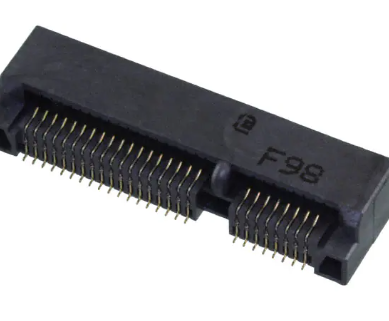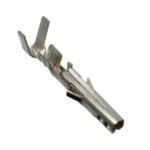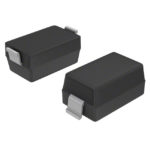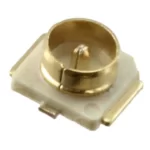Card Edge Connectors: Keep Your Cards Together
Versatility is the Key
The card edge connector is commonly found in computer motherboards. It has been used for decades and is still being used today. The card edge connector allows you to connect two printed circuit boards with terminal edges to each other.
The card edge connector is made up of two parts – the male and female connectors. These two parts fit together like puzzle pieces, allowing them to fit perfectly together. This makes it easier to connect the two boards and also helps prevent any short circuits or damage to your computer system.
The versatility of an edge connector makes it perfect for connecting multiple boards together. The connections are reliable and can be made with a low profile.
The most common use for edge connectors is to connect a motherboard to its daughterboards or cards. These include video cards, sound cards, network interfaces and anything else that you can think of that connects through a small piece of the printed circuit board.
The Components of Card Edge Connectors
Card edge connectors are a type of connector that is used on circuit boards. They provide a more robust connection than using wire wrap or solderless terminals.
The connectors are usually made from multiple layers of metal, which makes them more durable and less susceptible to damage. There are many different types of card edge connectors, which have different features that make them useful for specific applications.
Board Guide
The 52-position female connector’s board guide helps to align the card edge connector with the PCB for a proper connection and reduces the chances of misalignment by providing support to the card edge connector. It ensures that the connector pins are properly aligned with the card slot. It also prevents the card from being inserted upside down.
Isolation Gap
The isolation gap ensures that there is no short circuit between two adjacent connections. It also provides insulation between power and ground planes, which helps in reducing noise and interference issues.
Connector Pins
The connector pins make contact with the card edge connector socket on the PCB. These contacts can be spring-loaded, making sure that they always make good contact with the PCB socket even when a card is removed or inserted while connected to a host device.
Card Guide Rails
These rails guide the card into position as it is inserted into the host device, helping to align it properly in the socket and preventing damage during insertion and removal.
Some Advantages of Card Edge Connectors
Card edge connectors are the most common form of modular interconnection found on electronic devices. They are used extensively in computers, telecom systems, instrumentation, and many other applications.
The surface-mount card edge connector is designed so that its contacts mate with sockets on a printed circuit board (PCB) to provide an electrical connection between the PCBs. There are benefits of card edge connectors:
High Density
The card edge connectors are made using surface mount technology (SMT), which means they can be packed closely together onto boards without sacrificing speed or performance compared to through-hole components where there’s a limit to how close you can place one component next to another.
This allows for more connections on a single card, which can reduce the number of cards needed for your project. In addition, because the connectors are smaller than standard connectors, they take up less space on boards, allowing you to fit more components onto a single board and reduce your overall system cost.
Easily Customizable and Easy Assembly
The card edge connectors come in an array of different sizes, and there are also different types of sockets available for each size. This makes it easy for you to create an electronic design that perfectly matches your specifications.
The card edge connector has been designed with a locking mechanism, which makes it easy to assemble and disassemble during production processes, such as testing or maintenance work.
Double-Sided Connection
The card edge connector has a double-sided connection, meaning that it can be installed on both sides of the board. This allows for more efficient use of space when designing your product as you have more area available for other components so they can be in motion at high speed.
Low Profile
The card edge connectors are designed with a low profile, which makes them suitable for use in tight spaces or confined areas where there’s not much room available for bigger connectors like PCB headers or IDC sockets. They also don’t stick out too far from the board so they don’t get easily damaged during transportation or handling by users during installation or repair processes.
Some Frequently Asked Questions
What are the different sizes?
There are 3 different sizes: 1mm, 2mm, and 4mm of card edge connectors, their size refers to how thick the cards that you want to attach together with the card edge connector.
How do I know which size I need?
The size of your card connector will depend on the thickness of your cards. The thickness of a card is measured in millimeters (mm). For example, if you have a card that is 2mm thick, you will want to select the 2mm connector. If you have a card that is 1mm thick, then you will want to choose the 1mm connector.
The best way to determine the right size is by measuring the thickness of your cards. For example, if they’re less than 1/8″, you can choose the Standard Size, and if they’re between 1/8″ and 3/16″, you should choose the Large Size. For more information on sizing, you can consult Bomzon customer service for free or see Bomzon’s sizing guide.

Are there any different types of edge connectors?
There are two main types of edge connectors: IDC and PCB mount. IDC stands for Insulation Displacement Contact, while PCB mount refers to how the connector sits on top of a printed circuit board (PCB).
What are some common uses for edge connectors?
Edge connectors can be used in many different applications such as consumer electronics, automotive electronics, military/aerospace electronics, industrial electronics, and medical devices.


